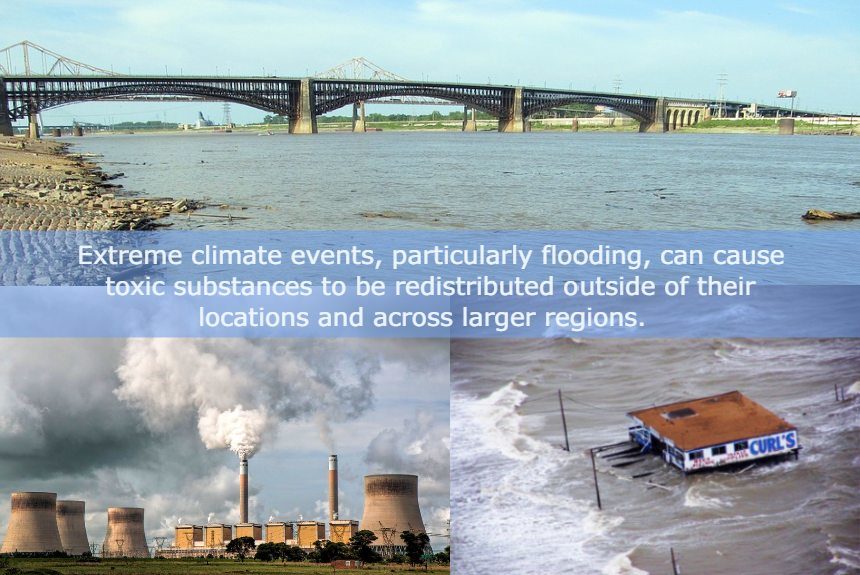Extreme climate events caused by climate change like the projected inland and coastal flooding can affect the built environment by distributing and redistributing toxic substances.
These can have damaging and detrimental effects on the built environment and the total population.
The study focuses on the role of climate change caused by extreme events in the distribution of toxins within residential communities in the United States’ largest cities.
The study says that only 3% of hazardous waste sites are enrolled in federally funded containment programs and the rest are locally monitored thus a leakage would be considered a localized problem.
Extreme climate events, particularly flooding, can cause toxic substances to be redistributed outside of their locations and across larger regions.
Climate change is projected to increase extreme weather events which could worsen the risk of toxin contamination from the source to the surrounding areas.
The study cited Hurricane Harvey in Houston, considered a 1 in a 1,000-year event to describe the potential risk of flooding to redistribute toxic substances. The post-Harvey analysis showed that these hazardous substances where transported from toxic sites into surrounding land, communities, and structures.
Flooding from a storm surge brought by Hurricane Sandy in New York City causes the toxins from eight contaminated sites to redistributed to surrounding areas.
Both Hurricane Sandy and Harvey demonstrate contamination risk due to flooding, a threat projected to increase due to climate change.
Continued sea-level rise will also increase the chances of coastal and inland flooding. Globally 250 million people living around coastal areas vulnerable to coastal flooding. And the numbers continue to rise. By 2050, 350 million will be vulnerable, and by 2100, 650 million people will be at risk.
Flooding management is needed to reduce risk of toxin contamination, however, the study has identified challenges to effective flooding management which includes flawed flood zone analysis and mapping, miscalculations of the risk of climate change, and budget constraints.
Further research is also needed on using hydrologic modelling to map pathways of toxic flows from flooded contaminated sites and impacted areas.
Results of the study indicate that environmental managers from the Federal to the city level need to adjust current standards to account for climate change.
To read the entire study, click the link below:
Source citation:
Marcantonio, R. A., Field, S., & Regan, P.M. (2019) Toxic trajectories under future climate conditions. PLoS ONE 14(12): e0226958. https://doi.org/10.1371/journal.pone.0226958



Leave a Reply